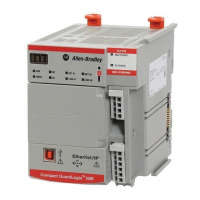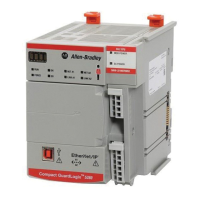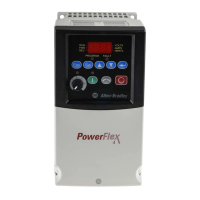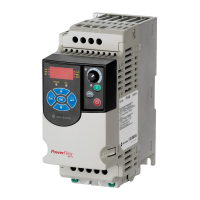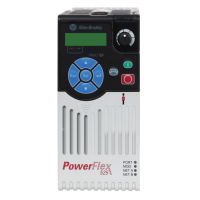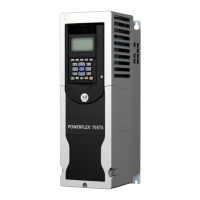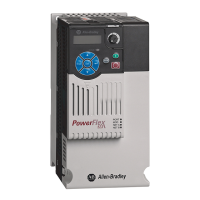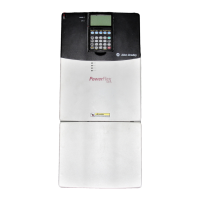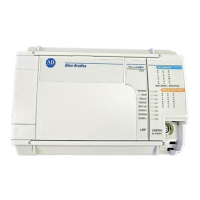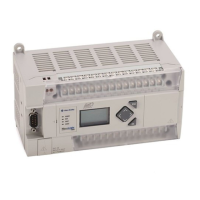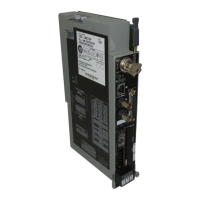Rockwell Automation Publication 1756-UM022D-EN-P - May 2017 147
Monitor Status and Handle Faults Chapter 9
Developing a Fault Routine
If a fault condition occurs that is severe enough for the controller to shut down,
the controller generates a major fault and stops the execution of logic.
Some applications do not want all safety faults to shut down the entire system.
In those situations, use a fault routine to clear a specific fault and let the
standard control portion of your system continue to operate or configure some
outputs to remain ON.
The controller supports two levels for handling major faults:
• Program Fault Routine
• Controller Fault Handler
Both routines can use the GSV and SSV instructions as described on page
148.
Program Fault Routine
Each program can have its own fault routine. The controller executes the
program’s fault routine when an instruction fault occurs. If the program’s fault
routine does not clear the fault, or if a program fault routine does not exist, the
controller proceeds to execute the controller fault handler, if one exists.
Controller Fault Handler
The controller fault handler is an optional component that executes when the
program fault routine cannot clear the fault or does not exist.
You can create one program for the controller fault handler. After you create
that program, you must configure a routine as the main routine.
The Logix5000 Controllers Major and Minor Faults Programming Manual,
publication
1756-PM014, provides details on creating and testing a fault
routine.
ATTENTION: You must provide proof to your certifying agency that your
system can continue to operate safely after an override of a safety fault.
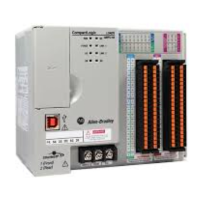
